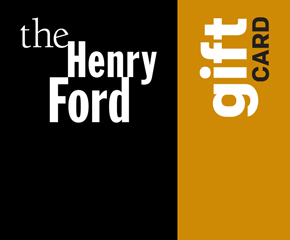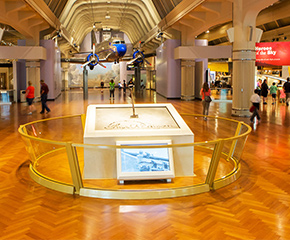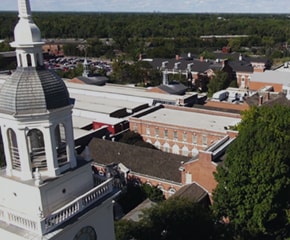
Detroit Publishing Company Collection
The Detroit Publishing Company was one of the major image publishers in the world for nearly 30 years from 1895 to 1924. The company produced prints of landscapes and city scenes across the United States and around the world. Incorporated in 1895 as the Photochrom Company in Detroit, Michigan, it was known until 1905 as the Detroit Photographic Company, and then the Detroit Publishing Company. The collection consists of photographic prints, postcards, and color prints with subjects dating from the 1880s through the 1910s.
Biographical / Historical Note
The Detroit Publishing Co. became a comprehensive publisher of photographic images around the turn of the century. Started in 1895 in Detroit, Michigan, it was known until 1905 by its two subsidiary operations, the Photochrom Co., dealing with the
MoreThe Detroit Publishing Co. became a comprehensive publisher of photographic images around the turn of the century. Started in 1895 in Detroit, Michigan, it was known until 1905 by its two subsidiary operations, the Photochrom Co., dealing with the production of color prints, and the Detroit Photographic Co., responsible for the publishing and distribution of photographic views made by the company. A timely joining of entrepreneurial energies helped assure the early success of the company.
William A. Livingstone (an engineer and son of wealthy Detroit shipping magnate, newspaper publisher, and financier, William Livingstone, Jr.), joined forces with a local photographer, Edwin H. Husher, to form the company. Husher and Livingstone obtained from the Photoglob Company of Zurich, Switzerland, the North American rights to an astounding new photolithographic process called Photochrom, to produce, in quantity, color prints that retained their photographic verisimilitude while capturing the vibrant colors of the popular chromolithographs of the late nineteenth century. Husher even persuaded an expert in the process, Albert V. Schuler, and a small crew of draftsmen from Switzerland to work for the new company. Since color photography as we know it did not then exist, holding exclusive rights to this Swiss method gave the company a significant advantage over its competitors. Besides producing these distinctive Photochrom color prints, the company also published color postcards, sepia-toned photographic prints, and lantern slides, all based on a huge inventory of photographic negatives.
The keystone of the company's success, pioneer American photographer William H. Jackson, joined the venture in late 1897, bringing 10,000 of his superb glass-plate negatives to form the core of the visual publication material. In his early years with the company, Jackson traveled throughout the United States, Canada, and the Caribbean, taking his own photographs and purchasing the photographic stock of local photographers. In 1902, Jackson and a crew of cameramen traveled throughout the country in a specially equipped railroad car containing a photographic studio and gallery. At its peak, the company drew upon 40,000 negatives for its publishing effort. Jackson and the other company photographers captured images ranging from the exotic to the ordinary, including special events, daily activities, resorts, cruise ships, and views of cities and countrysides throughout the United States and the world. The company also made photographs of businesses to be used in advertisements and promotions, and photographically reproduced art works from the collections of various museums.
By 1903, Edwin Husher, who had overseen the production of the color prints, resigned from the Photochrom Co. and Jackson began devoting most of his energies to supervising the publishing work in Detroit, but always keeping a hand in the making and acquiring of new photographic negatives. He supervised a crew of forty artisans and a dozen traveling salesmen at a time when the company sold seven million prints annually. By this time the company had developed an impressive distribution system combining worldwide retail sales, sales at resorts and tourist attractions, and mail-order sales. They maintained retail outlets in Detroit, New York City, Boston, and Los Angeles. They had retail exchange agreements with the Swiss company Photoglob and with the English licensees of the Photochrom process, the Photochrom Co., Ltd., in London. Public libraries and schools led the mail-order sales, but sales to individuals and independent retail outlets were not ignored by the company. The company's encyclopedic coverage of photographic images and wide variety of sales approaches demonstrated its eagerness to produce and distribute material to the broadest possible audience.
The Detroit Publishing Co.'s sales boom in the early years of this century slowed considerably when its line of business was categorized by the federal government during World War I as "non-essential," i.e., not vital to the war effort. It was, therefore, difficult to acquire material or keep workers employed for the duration of the war. Never really recovering from this slowdown, and feeling the bite of competitors using newer and less labor-intensive visual-reproduction methods, in 1924 the company went into receivership and continued on a smaller scale. Robert B. Livingstone, brother of William A. Livingstone, attempted to carry on the company after William's death in 1924, although most of his efforts were directed toward selling the more than 2,000,000 postcards and prints still on hand.
In 1932, the negatives owned by the Detroit Publishing Company were purchased by the Ohio Art Company, and moved taken to Byron, Ohio. The negatives were used as the basis to form a new company. Unfortunately, the name of the company is unknown. Robert B. Livingstone, however, formed a syndicate with which to buy back the Detroit Publishing Company negatives in 1934. The negatives were moved back to Detroit. The company shut its doors for good after the Livingstone’s death in 1936.
Even during its most vigorous years, the Detroit Publishing Co. did not produce prints or postcards from all of its photographic stock. After Robert Livingstone's death, the company's extant photographic negatives, master photoprints, sepia and color prints, postcards, and negative record log began a journey that has preserved them for today's researchers.
The Edison Institute (now known as The Henry Ford) acquired the remaining Detroit Publishing Co. materials in 1937 from the estate of Robert B. Livingstone. After a decade of persistence by William H. Jackson's son, Clarence, the institute agreed to donate the negatives of Western views to the Colorado Historical Society to join the growing collection of Jackson material there, and the negatives of Eastern United States and foreign views to the Library of Congress in Washington, D.C. The company's negative record log was also sent to Colorado. The Detroit Publishing Co. material in the collections of Henry Ford Museum & Greenfield Village today consists of vintage photoprints, postcards, and, color and sepia photomechanical prints. The original photographs are contact prints made by the company from the original glassplate negatives. They often contain written information about the topic, instructions concerning reproduction methods, and, occasionally, retouching marks. In this way the photographs serve as a visual record documenting the company as well as an era in American life.
Please note that this text, written by Cynthia Read Miller, was originally published in Main Street U.S.A., in Early Photographs: 113 Detroit Publishing Co. Views. It is based on information found in the Detroit Publishing Company accession file. Additions were made by Rosalie Ehrlich in 1999 and Cynthia Read Miller in 2001.
LessScope and Content Note
The Detroit Publishing Company (DPC) collection is comprised of several thousand items. It includes approximately 30,000 small format photographs, 1,000 oversize photographs, 5,000 photolithographic prints, and 15,000 postcards. These depict a wide...
MoreThe Detroit Publishing Company (DPC) collection is comprised of several thousand items. It includes approximately 30,000 small format photographs, 1,000 oversize photographs, 5,000 photolithographic prints, and 15,000 postcards. These depict a wide variety of subjects. The photographs in this collection were used to produce color prints and postcards using the Photochrom process between 1897 and 1936. (For a description of the Photochrom process, see the book entitled, The Birth of a Century, by Jim Hughes.) The majority of prints/postcards, however, were produced between 1897 and 1914.
The DPC collection is comprised of three series. They are 1. Photoprints, 2. Color Prints, and 3. Postcards. Descriptions of the materials in each series, are contained in the finding aid section preceding the box list for a particular series. It should be noted that the Photoprints series offers valuable information about the working processes of the DPC. This is especially important because of the limited number of company records in existence today. Researchers using this collection should be aware of related materials in collections at the Library of Congress and the Colorado Historical Society.
The Colorado Historical Society has a large collection of glass negatives, prints, Photochrom prints, and postcards created by the Detroit Publishing Company. Images are mostly views west of the Mississippi River. The collection also includes the Detroit Publishing Company negative log. The Colorado Historical Society is located in Denver, Colorado.
The Library of Congress has glass plate negatives of views east of the Mississippi. Many of the negatives held by the Library of Congress have been digitized and can be viewed online. Digitized images from the Detroit Publishing Company can be found at http://www.loc.gov/pictures/collection/det/.
LessCollection Details
Object ID: 37.102.0
Creator: Detroit Publishing Co.
Inclusive Dates: 1880-1936
Size: 17.2 cubic ft. and 46 oversize boxes
110.85 cubic ft. (142 boxes, 2 volumes, 2 mounts, 20 packets) [from Collection Shelf Inventory'
Language: English
Collection Access & Use
Item Location: Not Currently On Exhibit
Access Restrictions: The collection is open for research.
Credit: From the Collections of The Henry Ford.
Related Objects
Digitized Artifacts From This Collection
In many cases, not all artifacts have been digitized.
Contact us for more information about this collection.

Assembly of Marine Compound Steam Engines, Detroit Shipbuilding Company, Wyandotte, Michigan, 1901
 Details
Details
Assembly of Marine Compound Steam Engines, Detroit Shipbuilding Company, Wyandotte, Michigan, 1901
Artifact
Photographic print
Date Made
1901
Summary
From 1895 to 1924, the Detroit Publishing Company was one of the major image publishers in the world. The company's wide-ranging stock of original photographs documented life and landscapes from across the nation and around the globe. From the tens of thousands of negatives, the company created prints, postcards, lantern slides, panoramas, and other merchandise for sale to educators, businessmen, advertisers, homeowners and travelers.
Place of Creation
Keywords
Object ID
P.DPC.013652
Credit
From the Collections of The Henry Ford.
Location
By Request in the Benson Ford Research Center
Get more details in Digital Collections at:
Assembly of Marine Compound Steam Engines, Detroit Shipbuilding Company, Wyandotte, Michigan, 1901
What is The Henry Ford?
The national attraction for discovering your ingenuity while exploring America’s spirit of innovation. There is always much to see and do at The Henry Ford.

Detroit Photographic Company Private Railroad Car, Delaware Gap near Manunka Chunk, New Jersey, 1890-1901
 Details
Details
Detroit Photographic Company Private Railroad Car, Delaware Gap near Manunka Chunk, New Jersey, 1890-1901
Artifact
Photographic print
Date Made
1890-1901
Summary
Detroit Photographic Company promoted its thousands of images -- sold in the form of color postcards, prints and photo albums -- with railroad cars converted into mobile galleries. The company's photographs depicted everything from city streets to natural landscapes, and they were distinguished by the special "Photochrom" colorization process that made black-and-white images look like color photographs.
Creators
Place of Creation
Object ID
P.DPC.015065
Credit
From the Collections of The Henry Ford.
Location
By Request in the Benson Ford Research Center
Get more details in Digital Collections at:
Detroit Photographic Company Private Railroad Car, Delaware Gap near Manunka Chunk, New Jersey, 1890-1901
What is The Henry Ford?
The national attraction for discovering your ingenuity while exploring America’s spirit of innovation. There is always much to see and do at The Henry Ford.
Horse-Drawn Omnibus on Fifth Avenue, New York City, circa 1900
Artifact
Photographic print
Summary
Fifth Avenue residents opposed streetcar lines, claiming the vehicles were too quick and quiet to safely share the street with pedestrians and horse-drawn traffic. As an alternative, the Fifth Avenue Coach Company ran omnibuses like the one in this Detroit Publishing Company photograph. The fleet was replaced by gasoline-driven motor coaches in 1907.
Creators
Place of Creation
Keywords
Object ID
P.DPC.016690
Credit
From the Collections of The Henry Ford.
Location
By Request in the Benson Ford Research Center
Get more details in Digital Collections at:
Horse-Drawn Omnibus on Fifth Avenue, New York City, circa 1900
What is The Henry Ford?
The national attraction for discovering your ingenuity while exploring America’s spirit of innovation. There is always much to see and do at The Henry Ford.
Horse Back Riding, Central Park, New York City, circa 1895
Artifact
Photographic print
Summary
Landscape architects designed Central Park with separate carriage drives, walking paths, and equestrian trails. In this Detroit Publishing Company photograph, two young men ride horses and several pedestrian visitors cross one of Central Park's more than 40 bridges.
Creators
Place of Creation
Object ID
P.DPC.030905
Credit
From the Collections of The Henry Ford.
Location
By Request in the Benson Ford Research Center
Get more details in Digital Collections at:
Horse Back Riding, Central Park, New York City, circa 1895
What is The Henry Ford?
The national attraction for discovering your ingenuity while exploring America’s spirit of innovation. There is always much to see and do at The Henry Ford.
Electric Street Railroad Car on Holmes Road, Pittsfield, Massachusetts, circa 1910
Artifact
Photographic print
Date Made
circa 1910
Summary
Interurban railways were electric trains with features of both streetcars and passenger trains. They were lifelines between small towns and cities starting in the 1880s. This interurban ran through Western Massachusetts in the 1910s.
Place of Creation
Object ID
P.DPC.039888
Credit
From the Collections of The Henry Ford.
Location
By Request in the Benson Ford Research Center
Get more details in Digital Collections at:
Electric Street Railroad Car on Holmes Road, Pittsfield, Massachusetts, circa 1910
What is The Henry Ford?
The national attraction for discovering your ingenuity while exploring America’s spirit of innovation. There is always much to see and do at The Henry Ford.

Photochrom, "River Drive from Laurel Hill, Fairmount Park, Philadelphia, Pennsylvania," 1900
 Details
Details
Photochrom, "River Drive from Laurel Hill, Fairmount Park, Philadelphia, Pennsylvania," 1900
Artifact
Print (Visual work)
Summary
Large urban parks provided landscaped getaways for city dwellers. In Philadelphia, Pennsylvania, Fairmount Park contained scenic drives along well-kept roadways. This colorized image from 1900 shows a horse-drawn vehicle traveling down River Drive in the park.
Creators
Place of Creation
Object ID
37.102.182
Credit
From the Collections of The Henry Ford.
Location
By Request in the Benson Ford Research Center
Get more details in Digital Collections at:
Photochrom, "River Drive from Laurel Hill, Fairmount Park, Philadelphia, Pennsylvania," 1900
What is The Henry Ford?
The national attraction for discovering your ingenuity while exploring America’s spirit of innovation. There is always much to see and do at The Henry Ford.
Michigan Central Steam Locomotive, "An Engineer at His Post," circa 1904
Artifact
Photographic print
Date Made
circa 1904
Summary
This circa 1904 photograph shows a train engineer in a Michigan Central Railroad locomotive. The company had lines throughout Michigan's Lower Peninsula running from Detroit to Chicago and north to Mackinaw City.
Creators
Place of Creation
Keywords
Object ID
P.DPC.017222
Credit
From the Collections of The Henry Ford.
Location
By Request in the Benson Ford Research Center
Get more details in Digital Collections at:
Michigan Central Steam Locomotive, "An Engineer at His Post," circa 1904
What is The Henry Ford?
The national attraction for discovering your ingenuity while exploring America’s spirit of innovation. There is always much to see and do at The Henry Ford.
Passengers on the Fremont, Elkhorn and Missouri Valley Railroad, South Dakota, circa 1895
Artifact
Photographic print
Date Made
circa 1895
Summary
Passengers gathered for a photograph when the Fremont, Elkhorn, and Missouri Valley train stopped in a South Dakota mountain pass. The photograph, taken about 1907, shows the happy group on the back platform while the engineer and others peer out from the side.
Place of Creation
Keywords
Object ID
P.DPC.032051
Credit
From the Collections of The Henry Ford.
Location
By Request in the Benson Ford Research Center
Get more details in Digital Collections at:
Passengers on the Fremont, Elkhorn and Missouri Valley Railroad, South Dakota, circa 1895
What is The Henry Ford?
The national attraction for discovering your ingenuity while exploring America’s spirit of innovation. There is always much to see and do at The Henry Ford.
"Clear Creek Canyon above the Forks," Colorado, circa 1895
Artifact
Photographic print
Date Made
circa 1895
Summary
A Union Pacific, Denver, and Gulf Railway locomotive pauses in a narrow, rocky gap beside Clear Creek in Colorado. Railroads had pushed into many inaccessible areas by the time this photograph was taken in about 1895.
Place of Creation
Keywords
Object ID
P.DPC.01278
Credit
From the Collections of The Henry Ford.
Location
By Request in the Benson Ford Research Center
Get more details in Digital Collections at:
"Clear Creek Canyon above the Forks," Colorado, circa 1895
What is The Henry Ford?
The national attraction for discovering your ingenuity while exploring America’s spirit of innovation. There is always much to see and do at The Henry Ford.















